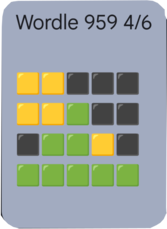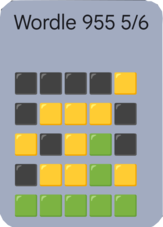
Optimal Smurfing in English and Greek
Optimal Smurfing in English and Greek Catherine Chatzopoulos, 2008, University of Chicago, Aristotle University of Thessaloniki
I found a PDF version of the paper.

Optimal Smurfing in English and Greek Catherine Chatzopoulos, 2008, University of Chicago, Aristotle University of Thessaloniki
I found a PDF version of the paper.

A programming interview question from the Daily Coding Problem email list. Here’s a non-hand-wavy explanation of a way to solve this problem.
Daily Coding Problem: Problem #736 [Easy]
Given a complete binary tree, count the number of nodes in faster than O(n) time. Recall that a complete binary tree has every level filled except the last, and the nodes in the last level are filled starting from the left. “Complete” means: every level, except possibly the last, is completely filled, and all nodes in the last level are as far left as possible. It can have between 1 and 2h nodes at the last level h.

If you’re ever near Rapid City, SD, you should visit the Reptile Gardens.

I solved Wordle 959 without help, my streak is now 97. I see another opportunity to write a large regular expression that could get the answer.

Another programming interview question from the Daily Coding Problem email list. I received it as #1608.
Daily Coding Problem: Problem #1608 [Medium]
This problem was asked by Microsoft.
Write a program to determine how many distinct ways
there are to create a max heap from a list of N given integers.
For example,
if N = 3,
and our integers are [1, 2, 3],
there are two ways, shown below.
3 3
/ \ / \
1 2 2 1
Repo for my code.

I’ve got an idea for Starship Troopers fan fiction. I’m giving it away, for free! You can have it!

I solved 955 without any computerized help, but I think my second-to-last guess can generate an interesting regular expression.
Programming interview question from the Daily Coding Problem email list. I have it as #1602, but other folks have it as #331 from 2020. I guess I missed it back then.
Daily Coding Problem: Problem #1602 [Medium]
This problem was asked by LinkedIn.
You are given a string consisting of the letters x and y,
such as xyxxxyxyy.
In addition,
you have an operation called flip,
which changes a single x to y or vice versa.
Determine how many times you would need to apply this operation to ensure
that all x’s come before all y’s.
In the preceding example,
it suffices to flip the second and sixth characters,
so you should return 2.
Repo for code.

How Steam Locomotives Work Paperback, March 1, 2022 by Brian Solomon, ISBN 9781627008808
Not to be confused with How Steam Locomotives Really Work